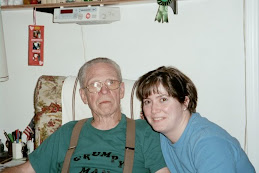I was encouraged to hear Bonnie speak about her experience connecting writing to testing. It's exciting to hear that grammar, reading, writing integrated into a writing workshop can raise test scores but more importantly teach the student to internalize the use of grammar through writing. I like her quote by Romano, "...if their writing is a mechanical disaster, their natural voice might be dismissed by others, regardless of how authentic, colorful, and pointed it is." This is so true. We need to learn grammatical conventions and distinguish between prescriptive and descriptive grammar to use language well.
I am a prescriptive grammarian with one exception. Because I am about the equity of punctuation and learning about grammar, I am often corrected in my use of the serial comma. This drives me crazy at times. The serial comma replaces the word "and"; therefore, it need not be used between the last two items in a series unless the omission results in ambiguity. I think it's a total copout to use it when it's unnecessary. Including it regardless of necessity is a way to relieve writers of the responsibility for understanding grammatical conventions.
Here's what Webster's Compact Writers Guide says: (I love it as it refers to both prescriptive and descriptive use of grammar)
Comma: with items in a series. NOTE: Style varies regarding the use of the comma between the last two items in a series if those items are also joined by a conjunction. In some cases, as in the example below, omitting the final comma (often called the serial comma) can result in ambiguity. Some writers feel that in most sentences the use of the conjunction makes the comma superfluous, and they favor using the comma only when a misreading could result from omitting it. Others feel that it is easier to include the final comma routinely rather than try to consider each sentence separately to decide whether a misreading is possible without hte comma. Most reference books, including this one, and most oother book-lenth works of nonfiction use the serial comma. In all other categories of publishing, according to our evidence, usage is evenly or nearly evenly divided on the use or omission of this comma.
Example:
We are looking for a house with a big yard, a view of the harbor, and beach and docking privileges. [with serial comma]
We are looking for a house with a big yard, a view of the harbor and beach and docking privileges. [without serial comma]
skip to main |
skip to sidebar




Jake and Nutmeg

Scott and me

Dad and Me

Dad watching Jake sleep

Blog Archive
-
▼
2009
(22)
-
▼
July
(22)
- Portfolios
- Top 10 Reasons to Revise
- Grades and Grading
- What I've Learned from our Workshops
- Bird by Bird
- Ways to Use Notebooks
- Top 10 Aha’s about Conferencing
- Teaching Conventions - Bonnie Warne
- Reaffirming the Writing Workshop - Sheryl Lain
- Conferring - Lucy Caulkins
- Writing as a Recursive and Individual Experience -...
- Revision Practices - Stephanie Dix
- Revision Strategies - Nancy Sommers
- After the End Chapters 14-16 - Barry Lane
- After the End Chapter 12 - Barry Lane
- After the End Chapter 10 - Barry Lane
- After the End Chapter 6 - Barry Lane
- The Art of Teaching Writing - Lucy Caulkins
- Non-Magical Thinking - Janet Emig
- What's Right with Writing - Linda Rief
- Britton and Moffett Compared
- Moffet Reflection
-
▼
July
(22)
No comments:
Post a Comment